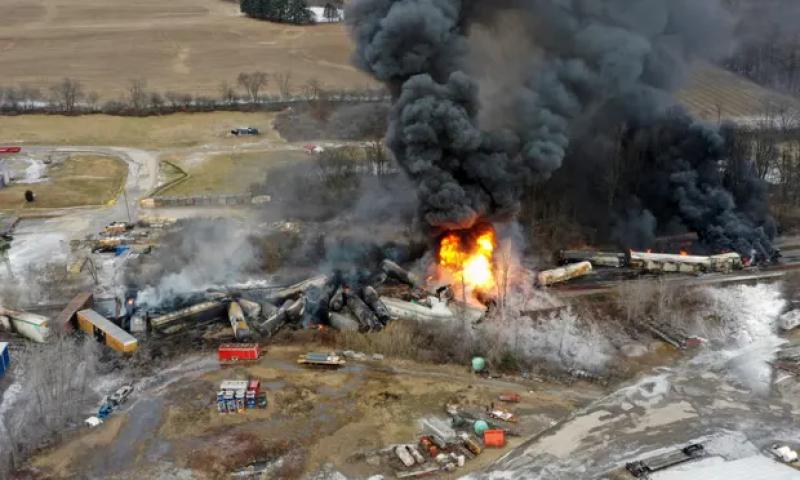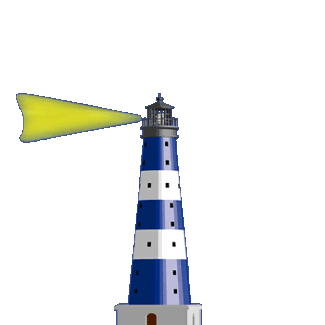Ohio officials to release toxic chemicals from derailed train to avert explosion
By: the Guardian


Officials urge anyone within 1-mile radius of site in north-eastern Ohio to leave amid 'potential of a catastrophic tanker failure'

So... basically... the public may get gassed...
... or get blown up.
This is called "Public Safety".


A photo taken with a drone shows portions of a Norfolk and Southern freight train that derailed Friday night in East Palestine, Ohio, still on fire on Saturday. Photograph: Gene J Puskar/AP A photo taken with a drone shows portions of a Norfolk and Southern freight train that derailed Friday night in East Palestine, Ohio, still on fire on Saturday. Photograph: Gene J Puskar/AP
Authorities in Ohio say they plan to release toxic chemicals from five cars of a derailed train in Ohio to reduce the threat of an explosion.
Governor Mike DeWine says a "controlled release" of vinyl chloride will take place on Monday at 3.30pm local time.
Residents near the site have been ordered to evacuate. DeWine said residents need to leave the area because of the risk of death or serious injury.
"We are ordering you to leave. This is a matter of life and death," DeWine said at a press conference. Anyone who remains in the immediate area faces "grave danger of death" if they inhale the fumes.
Police officers and others knocked on doors on Sunday night telling people to leave and were back out in the same neighborhoods on Monday, DeWine said. Authorities believe most, if not all, people have left who were told to do so.
Scott Deutsch of Norfolk Southern Railway said the controlled release during the daytime will allow the fumes to disperse more quickly and prevent the rail cars from exploding and sending shrapnel and other debris flying through the neighborhood, Deutsch said.
"We can't control where that goes," he said.
He estimated the process would take from one to three hours. The site is very close to the state line, and the evacuation area extends into Pennsylvania.
About 50 cars, including 10 carrying hazardous materials, derailed in a fiery crash on Friday night, according to rail operator Norfolk Southern and the National Transportation Safety Board (NTSB). No injuries to crew, residents or first responders were reported.
Norfolk Southern said 20 of the more than 100 cars on the train were classified as carrying hazardous materials - defined as cargo that could pose any kind of danger "including flammables, combustibles, or environmental risks".
The cars involved carried combustible liquids, butyl acrylate and residue of benzene from previous shipments, officials said.
Five were transporting vinyl chloride, which is used to make the polyvinyl chloride hard plastic resin in plastic products and is associated with increased risk of liver cancer and other cancers, according to the federal government's National Cancer Institute.
A statement from DeWine's office warned on Sunday night of "the potential of a catastrophic tanker failure" after a "drastic temperature change" was observed in a rail car.
Police cars, snowplows and military vehicles from the Ohio national guard blocked streets leading into East Palestine on Monday morning as authorities began enforcing what had previously been a strongly recommended evacuation zone within a one-mile (1.6km) radius of the crash site.
Schools and many businesses were closed, and the local high school was turned into a shelter.
Federal investigators had announced on Sunday that a mechanical issue with a rail car axle caused the fiery derailment near the Pennsylvania state line on Friday night.
Michael Graham, a board member of the NTSB, said at a news conference that the three-member train crew received an alert about the mechanical defect "shortly before the derailment" but said the board was still working to determine which rail car experienced the issue.
The NTSB said only 10 cars carrying hazardous materials derailed, and five of them were carrying vinyl chloride, not 14 as was said earlier. Officials stressed late Saturday that they had not confirmed the release of vinyl chloride other than from pressure release devices operating as designed.
"Short-term exposure to low levels of substances associated with the derailment does not present a long-term health risk to residents," according to a "Frequently Asked Questions" post on the village Facebook page. "Vinyl chloride and benzene may cause cancer in people exposed in the workplace to high concentrations for many years; however, there is no indication that any potential exposure that occurred after the derailment increases the risk of cancer or any other long-term health effects in community members."
Officials said on Sunday afternoon that cars involved also carried combustible liquids, butyl acrylate and residue of benzene from previous shipments, as well as nonhazardous materials such as wheat, plastic pellets, malt liquors and lube oil.
The evacuation order covered the homes of 1,500 to 2,000 of the town's 4,800 to 4,900 residents, but officials said it was unknown exactly how many were actually affected. Most of those who had gone to an emergency shelter were no longer there by Sunday.
Norfolk Southern opened an assistance center in the village to gather information from affected residents. Village officials said 75 people went to the center on Saturday and about 100 had been there Sunday morning.




Of course, America exported its worst rail disaster north to Canada, at Lac-Mégantic .
Does Canadian Pacific Railway (CP) bear any responsibility?
Dunno
In other words, "Damned if you do, and damned if you don't".
Vinyl chloride is a Group 1 Carcinogen and effects ( from wiki ):
Similar has happened here. In1992 there was a benzine spill from a train derailment. Over 50,000 people were evacuated from an "orange colored vapor cloud measuring 20 miles long and 5 miles wide". I was gone in the Coast Guard back then, but my mother told me that my father refused to evacuate.
When I was working in the container ship business haz mat was our biggest concern at all times. Rules were super strict and enforced.
One time a container blew up on the dock in Oakland before it was loaded on the ship this of course, closed most of the port for the rest of the day. What was discovered was that an exporter was exporting cars to the south Pacific and Micronesia loading them in a container at his facility and then miss declaring them and not showing that they were autos to get a cheaper rate. When shipping autos there are many restrictions to prevent what happened here the exporter not only miss declared the cargo but did not follow the rules of an empty gas tank, battery disconnected etc. Once this was discovered the SS line went back around 5 years and researched every container he shipped with them by checking the discharge and pick up papers at the destination ports once that was done they went back after the exporter for all the back revenue that he owed. Then the various SS lines port authority basically banned him from shipping. I also believe that criminal charges were filed against he and his company.
Even handled properly haz mat cargo is extremely dangerous as can be seen by this incident.
I agree, unfortunately they also tend to overclassify hazardous materials. Things that should never be classified as hazardous are. Like seat belt pretensioners.
That explosive charge definition is a bit much. It is actually a very small CO2 cartridge that is broken. Yet seat belt pretensioners are still labeled a Class 9 (consumer commodity). It doesn't need to be placarded; but the shipper decided the rules had changed and began placarding all of the containers. This caused issues with drivers entering the rail (seems the rail can't remember the hazardous rating when they see the placard); and after the load delivers- drivers can't seem to remember to remove the placards (which weren't needed to begin with). This causes issues if they are stopped- hazardous markings on a non hazardous empty container- or worse a food load. We are sending all of the removal of placard costs and fines to the shipper hoping that will stop them.